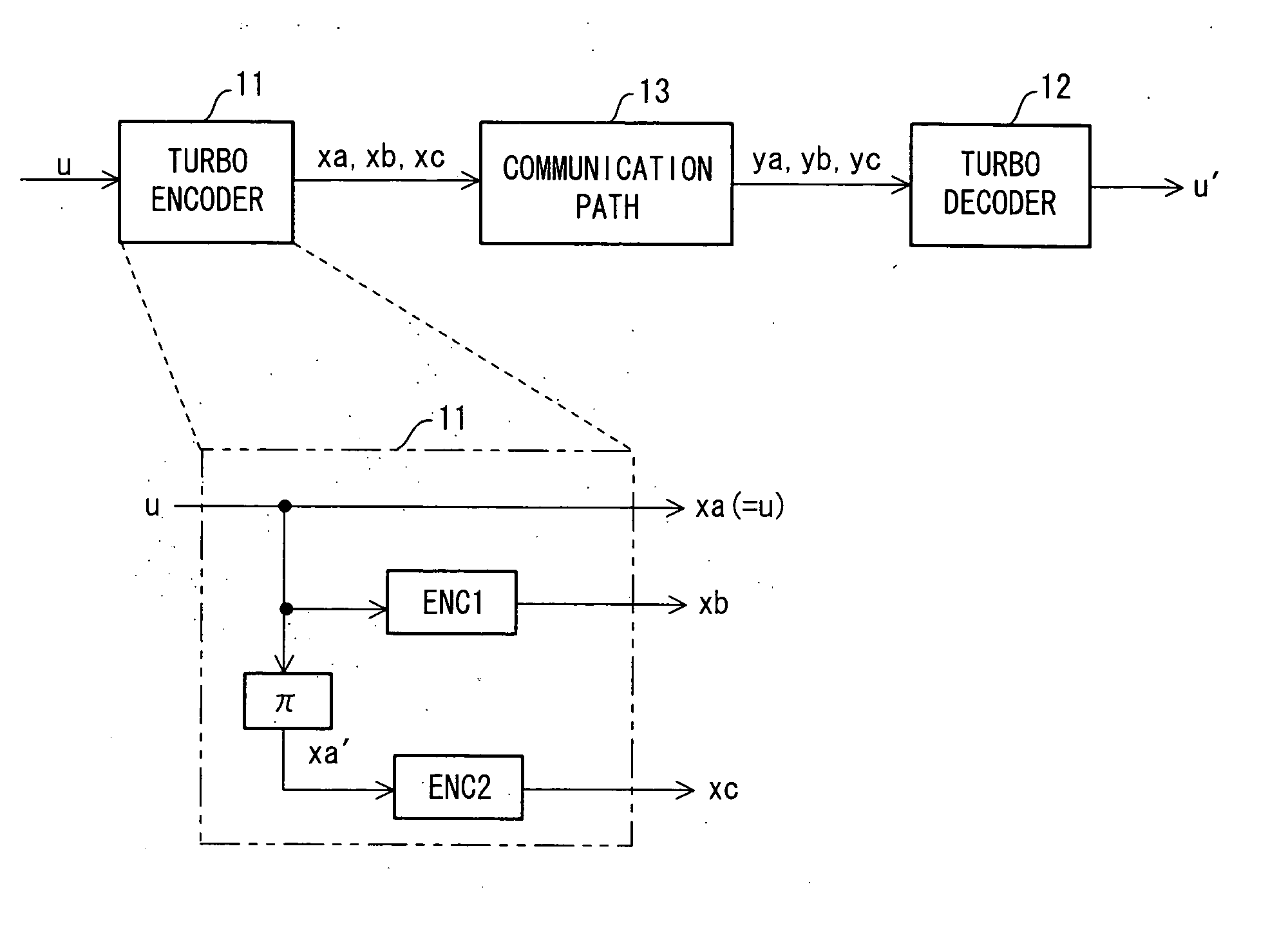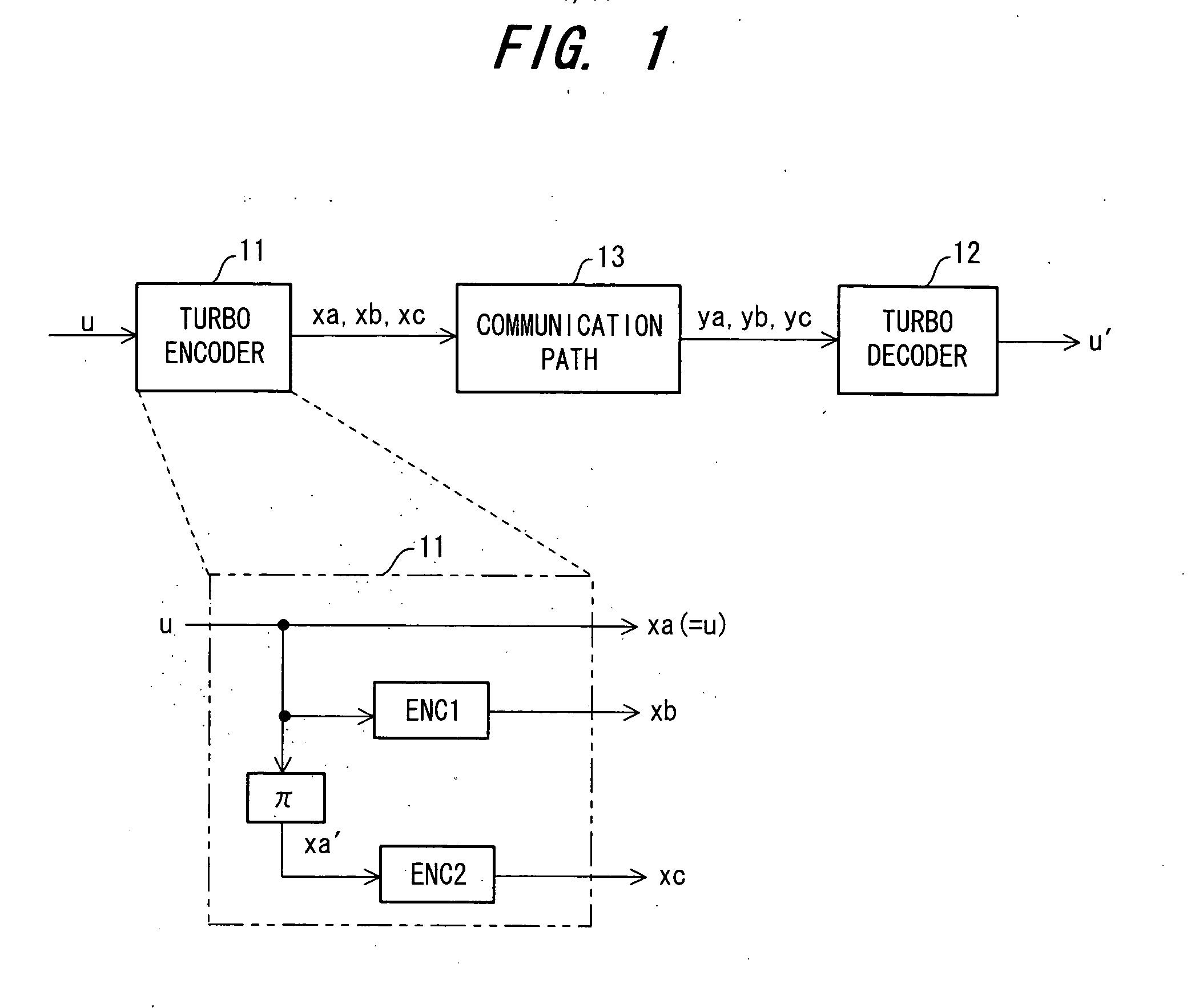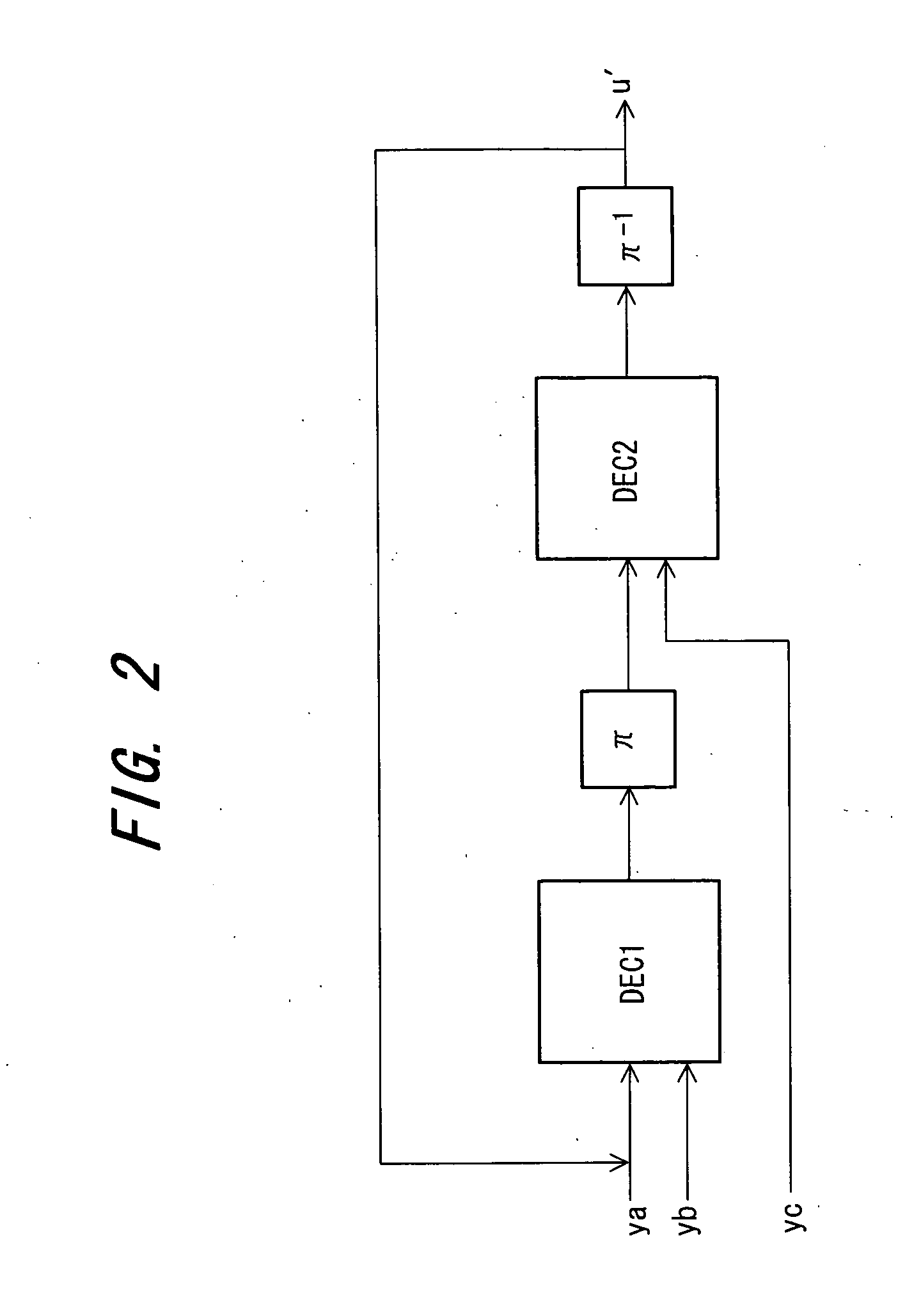Maximum a posteriori probability decoding method and apparatus
- Summary
- Abstract
- Description
- Claims
- Application Information
AI Technical Summary
Benefits of technology
Problems solved by technology
Method used
Image
Examples
first embodiment
(B) First Embodiment
[0137]FIG. 3 is a time chart of a maximum a posteriori probability decoding method according to a first embodiment applicable to a MAP element decoder.
[0138] According to the first embodiment, processing identical with that of the conventional SW method is performed in the first execution of decoding processing (the upper half of FIG. 3). Specifically, backward probabilities in respective ones of blocks, namely a block BL1 from L to 0, a block BL2 from 2L to L, a block BL3 from 3L to 2L, a block BL4 from 4L to 3L, a block BL5 from 5L to 4L, . . . , are calculated in order from data positions (initial positions) backward of each block using prescribed values an initial values, whereby backward probabilities at the starting points of each of the blocks are obtained. (This represents backward-probability training.) For example, backward probabilities are trained (calculated) in order from data positions 2L, 3L, 4L, 5L, 6L, . . . backward of each of the blocks to ob...
second embodiment
(C) Second Embodiment
[0150]FIG. 5 is a time chart of a maximum a posteriori probability decoding method according to a second embodiment.
[0151] According to the second embodiment, processing identical with that of the conventional SW method is performed in the first execution of decoding processing (the upper half of FIG. 5). Specifically, backward probabilities in respective ones of blocks, namely block BL1 from L to 0, block BL2 from 2L to L, block BL3 from 3L to 2L, block BL4 from 4L to 3L, block BL5 from 5L to 4L, . . . , are calculated in order from data positions (initial positions) backward of each block using fixed values an initial values, whereby backward probabilities at the starting points of each of the blocks are obtained. (This represents backward-probability training.) For example, backward probabilities are trained (calculated) in order from data positions 2L, 3L, 4L, 5L, 6L, . . . backward of each of the blocks to obtain backward probabilities at starting points L...
third embodiment
(D) Third Embodiment
[0157]FIG. 6 is a time chart of a maximum a posteriori probability decoding method according to a third embodiment.
[0158] The third embodiment is premised on the fact that all input receive data of one encoded block has been read in and stored in memory. Further, it is assumed that backward-probability calculation means, forward probability-calculation means and soft-decision calculation means have been provided for each of the blocks of block BL1 from L to 0, block BL2 from 2L to L, block BL3 from 3L to 2L, block BL4 from 4L to 3L, block BL5 from 5L to 4L, . . . . The third embodiment is characterized in the following four points: (1) SW-type decoding processing is executed in parallel block by block; (2) forward-probability calculation means for each block executes a training operation and calculates forward probability; (3) forward probabilities and backward probabilities obtained in the course of the preceding calculations are stored as initial values for ca...
PUM
 Login to View More
Login to View More Abstract
Description
Claims
Application Information
 Login to View More
Login to View More - R&D
- Intellectual Property
- Life Sciences
- Materials
- Tech Scout
- Unparalleled Data Quality
- Higher Quality Content
- 60% Fewer Hallucinations
Browse by: Latest US Patents, China's latest patents, Technical Efficacy Thesaurus, Application Domain, Technology Topic, Popular Technical Reports.
© 2025 PatSnap. All rights reserved.Legal|Privacy policy|Modern Slavery Act Transparency Statement|Sitemap|About US| Contact US: help@patsnap.com



